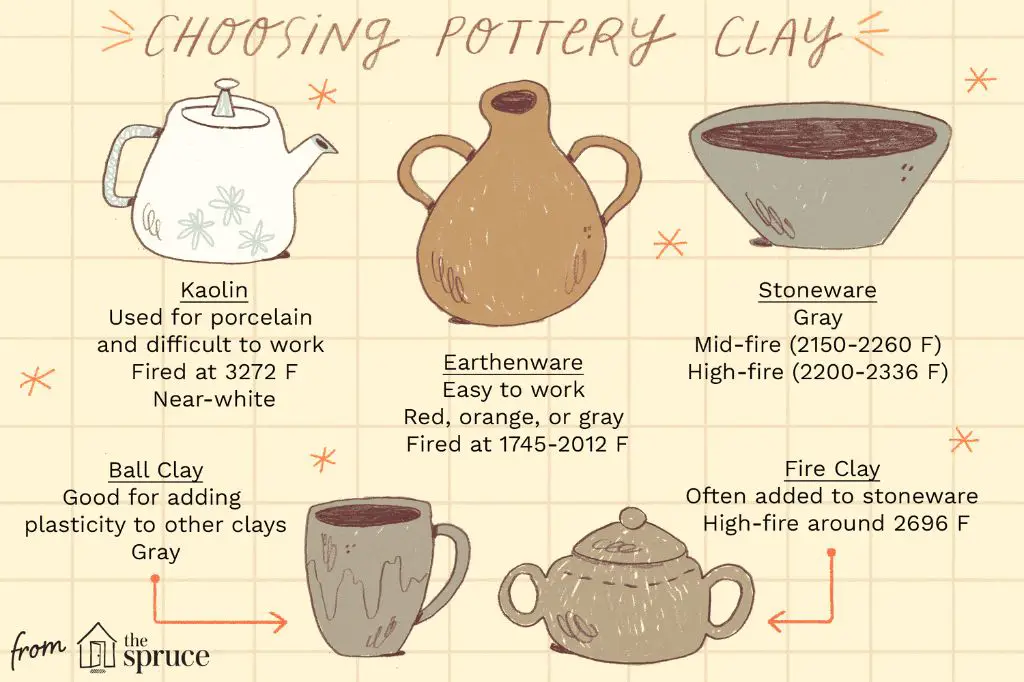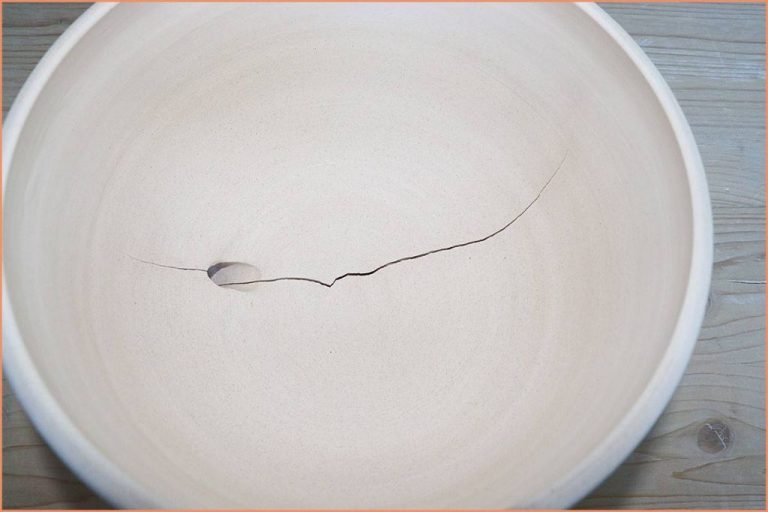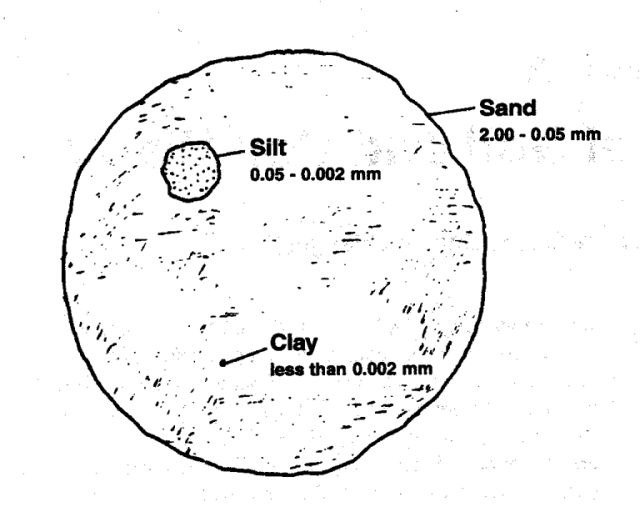A Closer Look At Clay: Types, Texture, And Temperatures
Clay is a type of fine-grained natural soil material that contains minerals such as feldspar, quartz, mica, and kaolinite. Clays develop plasticity when wet, due to the particle shape and surface chemistry. Some key properties of clay include its ability to bind to other particles to form aggregates, its high surface area and reactivity, and its ability to adsorb and retain ions. Clay materials have been used throughout human history—primarily for making pottery items, figurines, and bricks. They also have wide industrial and agricultural applications.
This article will provide a closer look at different types of clays, their composition and textures, working with clay including firing and glazing techniques, notable clay artists, and the importance of clay more broadly.
History of Clay
The origins and earliest uses of clay date back millennia. According to archaeological evidence, some of the first known ceramic objects were fashioned as early as 29,000 BC, in central Europe during the Stone Age. Early humans discovered that clay could be dug up, mixed with water and shaped into objects like figurines and clay vessels. Eventually, these objects hardened when placed in a fire. Some of the earliest known clay artifacts have been discovered originating from the Jomon period in Japan around 14,000 BC [1].
Around 6000 BC, clay use became more sophisticated with the invention of the potter’s wheel in Mesopotamia. This innovation allowed artisans to produce perfectly round ceramic pots efficiently. Over the next several thousand years, as human civilization progressed, pottery and ceramic making techniques became increasingly advanced across cultures including ancient Egypt, Greece, and China. Popular vessels produced over the millennia included amphoras, kraters, kyathos, and pyxides.
Major innovations in the history of pottery include the discovery and usage of glazes. Glazes create a glassy coating and decorative finishes for ceramic ware. The earliest known glazed objects were excavated from Egyptian tombs dating around 4000 BC. Chinese potters began experimenting with glaze recipes as early as 1400 BC during the Shang Dynasty.
By around 100 AD, the potter’s wheel became widespread across the Roman Empire allowing standardized productions of ceramics. This ushered in the proliferation of terra sigilatta ware, glossy red decorated tableware, throughout Europe and the Mediterranean [2].
Types of Clay
There are several main types of clay used for pottery and ceramics. The most common include:

Earthenware: The most widely used type of pottery clay. Earthenware is porous and absorbent and fires at lower temperatures between 1700-2100°F. It is softer and more prone to chipping/cracking than other clays. Common types of earthenware clay include red earthenware, terra cotta, and buff earthenware. Sources: https://thepotterywheel.com/types-of-clay-for-pottery/, https://www.soulceramics.com/pages/types-of-clay
Stoneware: A strong, vitreous type of clay that becomes watertight when fired between 2200-2400°F. Stoneware is less porous than earthenware but not as glassy as porcelain. It maintains warmth well making it popular for ovenware. Common stoneware clays are mid-fire and high-fire. Sources: https://thepotterywheel.com/types-of-clay-for-pottery/, https://www.soulceramics.com/pages/types-of-clay
Porcelain: The most refined and vitreous type of clay. It fires between 2250-2450°F and becomes completely non-porous and glasslike. Porcelain is white after firing and known for its strength, hardness and translucency. It’s popular for tableware and art objects. Porcelain can be difficult to work with as it’s stiff and prone to cracking and warping. Sources: https://thepotterywheel.com/types-of-clay-for-pottery/, https://www.soulceramics.com/pages/types-of-clay
Clay Composition
Clay’s unique properties come from its chemical composition. Clay is made up of silica, alumina, and water, with other minerals like iron, magnesium, and alkali metals present in varying amounts. The key components that give clay its distinctive characteristics are the clay minerals present.
Clay minerals belong to the phyllosilicate group, meaning they have a sheet-like structure. The most common clay minerals include kaolinite, montmorillonite, and illite Clay mineral. These sheet silicates contribute plasticity, bonding, strength, shrinkage, and other attributes to clay bodies. Other minerals in clay influence its firing color and texture.
The mineral proportions and composition determine the clay’s properties and how it responds to firing. Clays with higher fluxes like iron and magnesium vitrify at lower temperatures. The minerals present also control the clay’s melting behavior. Understanding clay composition helps potters select the right clay for their needs and adjust firing accordingly.
Clay Textures
Clay comes in a variety of textures, ranging from smooth to sandy to groggy. The texture of the clay affects its workability and the look and feel of finished pieces.
Smooth clays, like porcelain, have a fine, even texture that makes them very plastic and easy to work with. Smooth clays are ideal for throwing on the pottery wheel and capturing fine details.
Sandy clays contain small particles of sand or grit that make the clay less plastic. Sandy clays are more difficult to throw on the wheel but produce a charming sandy or speckled surface texture. Popular sandy clays include stoneware and terracotta.
Groggy clays have had grog (ground-up fired clay) added to the raw clay body. The grog gives the clay more tooth and opens up the clay body, making it less prone to cracking and warping during drying and firing. Groggy clay tends to have a rough, bumpy texture. Raku and some stoneware clays often contain grog additives.
The texture of the raw clay influences the look and feel of finished ceramic pieces. Smooth clays produce smooth finishes, while sandy and groggy clays make pieces with more texture and visual interest. Understanding clay textures allows potters to select the right clay for their desired application.
Working with Clay
Working with clay involves several key stages and techniques. After digging clay from the ground, it must be cleaned and prepared. This process, called wedging, involves cutting, kneading, and pounding the clay to remove air bubbles and create an even consistency. Wedging ensures the clay has the right plasticity to be worked. Some potters also add temper like sand or grog (ground fireclay) to improve the clay body during this stage.
Once wedged, clay can be shaped using different techniques. The most common are throwing on the potter’s wheel, handbuilding using pinching, coiling, or slabs, and molding objects by pressing clay into or over forms. Clay is very malleable at this stage and can be manipulated into shapes by hand or using basic tools like ribs, loop tools, sponges, and knives.
After forming a piece, potters often use techniques like burnishing or carving to refine the surface texture. When ready, clay must be dried slowly and evenly to prevent cracking before firing. Firing permanently hardens the clay through sintering at high temperatures in a kiln. There are various types of firings, like bisque firing before glazing or higher temperature glaze firing. The final result is a ceramic material that has been shaped and decorated using the unique plasticity of clay.
Firing Clay
Firing is a critical step in processing clay that permanently changes its physical properties. Clay is fired in a kiln, which is an insulated chamber that can generate extremely high temperatures. Most stoneware clays are fired between 2,200-2,300°F (1,204-1,260°C) [1]. Higher firing temperatures result in higher strength and lower porosity. Temperatures are precisely controlled during the firing process. A cone is placed inside the kiln to visually indicate when certain temperatures are reached as cones melt at specific temperatures [2].
Kilns can be operated in oxidation or reduction mode. In oxidation, the clay has access to oxygen throughout the firing. Reduction cuts off oxygen supply at peak temperatures resulting in chemical changes that alter glaze colors and effects. Firing causes clay particles to fuse together through sintering and vitrification. Water and carbon trapped within the clay are expelled. As temperatures rise, minerals within the clay undergo chemical reactions. Silica and alumina fuse to form mullite crystals, increasing strength [3]. By the end of firing, the clay has been permanently altered into a strong, fused ceramic material.
Glazing Clay
Glazes are vitreous coatings applied to pottery to provide an impervious and decorative surface finish. There are many types of glazes that can produce different effects on the final ceramic piece.
Some common types of glazes include gloss glazes, matte glazes, crystalline glazes, and specialty glazes like raku glazes. Gloss glazes have a shiny, glass-like finish and are the most commonly used glazes. Matte glazes have a soft, muted look. Crystalline glazes contain minerals that crystallize as the glaze melts, creating distinctive visual textures. Raku glazes are specially formulated to craze and crackle when rapidly cooled after firing.
Glazes can be applied using a variety of techniques like dipping, pouring, brushing, spraying, splattering, and more. Each technique produces different artistic effects. For example, spraying glaze on can create an even, smooth coating while splattering can give a mottled, organic look. Applying multiple layers and colors of glazes using different techniques allows artists to produce unique visual effects in their finished ceramic work.
Notable Clay Artists
Here are some of the most influential ceramic artists known for their innovative styles and contributions to the medium of clay:
Edmund de Waal is a British ceramic artist best known for his minimalist porcelain installations. De Waal’s work often explores themes of memory and loss through the poetic arrangement of porcelain vessels. His bestselling memoir The Hare with Amber Eyes brought him international acclaim beyond the art world. [1]
Magdalene Odundo is a Kenyan-British ceramicist specializing in one-of-a-kind hand built pieces inspired by African pots. Her vessels feature delicately pinched and ridged surfaces that showcase the raw sculptural qualities of clay. Odundo has exhibited globally and her works are included in major museum collections. [1]
Jennifer Lee is an American ceramicist and educator known for her nature-inspired porcelain works. Lee creates meticulously crafted objects that celebrate the intrinsic fragility and ephemeral beauty of the natural world. She has been instrumental in the contemporary porcelain movement. [2]
Peter Voulkos was an American ceramic sculptor often credited with elevating ceramics to the realm of fine art. Voulkos pioneered Abstract Expressionist techniques in clay such as scraping, slashing, and stacking. His energetic, gestural works changed perceptions about the plasticity and expressive potential of the medium. [3]
Conclusion
In conclusion, clay is a versatile and ancient art medium that continues to captivate artists and art appreciators today. We’ve explored the different types and textures of clay, key techniques for working with it, and the firing and glazing processes that transform humble clay into stunning ceramic artworks.
Clay allows artists to craft both functional pottery and intricate sculptures in two or three dimensions. The accessibility and workability of clay has made it a popular choice for artists around the world for thousands of years. Looking ahead, clay art promises to continue evolving as new artists make their mark and new technologies emerge. Most importantly, the timeless appeal of shaping, texturing and transforming clay by hand endures.
Clay’s rich history and promising future make it a medium worth learning about and exploring for aspiring and experienced artists alike. We’ve just scratched the surface of the creative possibilities that clay offers. With an understanding of its unique properties and characteristics, anyone can begin shaping clay into meaningful artworks and handicrafts.



